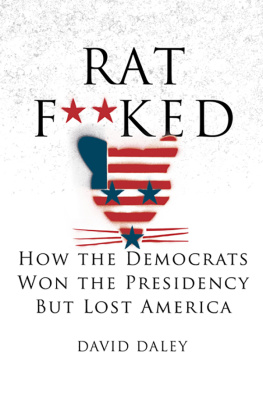Girls & Women,
Men & Boys
For David, with love
Girls & Women,
Men & Boys
GENDER IN TARADALE 18861930
Caroline Daley
First published 1999
This ebook edition 2013
Auckland University Press
University of Auckland
Private Bag 92019
Auckland 1142
New Zealand
www.press.auckland.ac.nz
Caroline Daley 1999
eISBN 978 1 86940 648 6
Publication is assisted by the Historical Branch of the Department of Internal Affairs
This book is copyright. Apart from fair dealing for the purpose of private study, research, criticism or review, as permitted under the Copyright Act, no part may be reproduced by any process without the prior permission of the publisher.
Contents
Acknowledgements
This book began its life many years ago when I was a graduate student in the Department of History at Victoria University of Wellington. Jock Phillips supervised the PhD from which Girls and Women, Men and Boys is derived. I remain extremely grateful to Jock for the support he offered me then, and has continued to offer. Many other people in Wellington influenced my work over those years. I would like to thank Dominic Alessio, Michael Eyes, Miles Fairburn, David Hamer, Ann Hardy, Richard Hill, Malcolm McKinnon, Malcolm McLean, Benjamin Morgan, Melanie Nolan, and Kim Sterelny for their encouragement and help.
After I joined the Department of History at the University of Auckland I began the slow process of turning my PhD into a book. When I became frustrated with the project Raewyn Dalziel and Barry Reay were always there to offer encouragement and help. My debt to them is enormous. Despite the onerous tasks of the modern university, they both read an earlier draft of my manuscript. Their encouraging response helped me bring this project to fruition. Others in the university have also been a great source of help and friendship, particularly Malcolm Campbell, Tim Dare, Deborah Montgomerie and Philip Rousseau.
I am grateful for the financial support I received to write the PhD and then turn it into a book: a University Grants Committee Postgraduate Scholarship, the F. P. Wilson Scholarship in New Zealand History, the Helen Stewart Royle Scholarship, the Jacob Joseph Scholarship, a Historical Branch Bursary, a grant from the Taradale and Districts Centennial Celebration Committee, and short-leave from the University of Auckland. I thank the Historical Branch, Department of Internal Affairs, for awarding this book a publication subsidy.
I would also like to thank the people of the Taradale area who have helped me over the years. I am indebted to the people who agreed to be interviewed for this project, to Irene Lister - Taradales own local historian - and to May Davis, who shared her photograph album with me. I am grateful for the assistance offered to me by Joy Axford and Gail McGahan at the Hawkes Bay Museum, and the many librarians and archivists at the various institutions I did research in. The nature of the study meant I spent a lot of time working in non-governmental archives, and I extend my thanks to the many unpaid archivists who went out of their way to assist me. I would also like to thank the Registrar General for giving me free access to Birth, Death and Marriage records.
The staff at AUP has been supportive of this project from a very early stage. I thank Elizabeth Caffin for always believing in Taradale, the Presss anonymous reader who made me rethink some of my work, Anne Else for her sympathetic editing, and the rest of the AUP team.
Finally, I would like to thank my family - especially my mother, Pat, and my grandmother, Sally - for the support and encouragement they have given me and my work over the years. From always welcoming me home when I came to do research, to buying me a leather jacket (thank you, Sarah), they were and are always there for me. As has David. He has read drafts, made me dinner and always encouraged me. I have been working on Taradale since we met. I can only think that it is a good sign that my current project is tentatively entitled a history of leisure and pleasure.
Caroline Daley
February 1999
CHAPTER 1
Introduction: Gender and the Taradale Community
In 1890 the board of Taradale School held a meeting to discuss the behaviour of the boys and girls under their charge. They were concerned about the lack of control the teachers had over the children, and how some of the young people were interacting. The solution was obvious to the school board - they decided to build a dividing fence in the playground. The boys would have one side, the girls the other.
A couple of years later the school board was able to purchase another acre of land, adjacent to the girls playground. At first the committee saw this as a way to extend the girls playground.
For the most part the children stayed within their respective playgrounds. Although there was an opening in the dividing fence, there is no indication that it was used often. Occasionally boys and girls crossed the gendered boundary for a furtive liaison or dare but generally they preferred to stick to their own turf. Girls considered the boys area rough: boys knew the girls playground was for sissies. This The maypole was in the girls playground. William was humiliated by being forced to cross over into the girls territory and join in their feminine games.
These school stories encapsulate what this book is about. This is a history of a local community through a gendered lens. It does not aim to be a total historical account of the area. Rather, it offers insights into the meanings of gender in the lives of the women and men, girls and boys who lived in the small, semi-rural community of Taradale, New Zealand, in the late nineteenth and early twentieth centuries. It does this through examining kin groups and interactions, the household economy and leisure. Of course, many other aspects of gender could be examined, such as sexuality, ethnicity and violence. However, they are not my focus here, partly because of the sources available.
Most of the historical studies of women and men in New Zealand have traced their separate lives. I am as interested in their joint activities as in their different histories. Boys and girls had separate playgrounds, but they went to the same school and spent many hours together. For much of their lives the people of Taradale did not live in so-called separate spheres. Kin was central: people in Taradale lived in a community which revolved around family life and family ties. The first focus of the book is on these shared, often familial activities.
Yet within their shared spaces women and men, girls and boys often had different experiences. As the photograph of Taradale School indicates, boys and girls not only played in different areas; they also entered the school grounds through separate gates, and entered their classrooms through separate doors. Once inside, they sat in sex-segregated seats. Their gender was made to matter, and this continued into their adulthood. So the second focus of this book is on the different, gendered experiences the people of Taradale had within the shared world they inhabited, whether at home, at school, at work or in leisure.
My third focus is not so much on the events and experiences themselves, whether shared or separate. Rather it is with the meanings they were given. While Williams female contemporaries had fond memories of playing on the maypole, for him this was a shameful, emasculating experience. For the most part, the way gender was understood in Taradale is explored through examining and comparing the oral histories of the men and women I interviewed. What they recalled about family life, the household economy and leisure, and how they recalled it, reveals much about the pervasiveness of gender ideas and ideals in this community. Their stories were gendered in both content and form.
Next page













